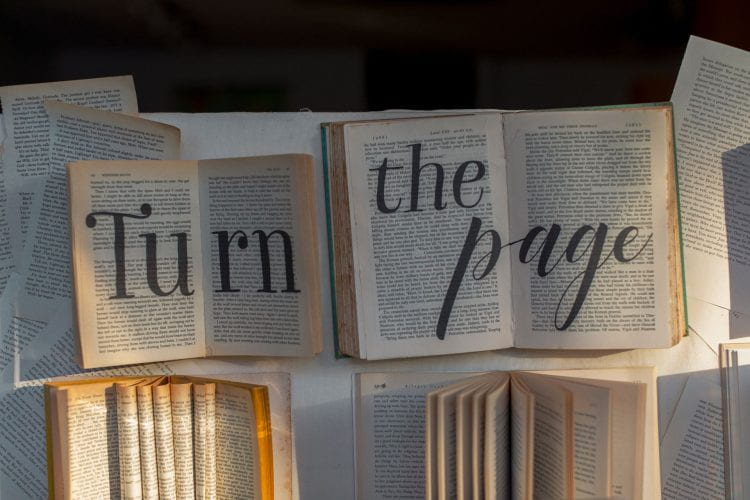“Place-based education? We have it all,” a colleague recently quipped. Though I agree, I am not so declarative. Instead, I seemingly find myself routinely in quiet appreciative contemplation of the place I live. Fittingly, this past week a friend shared an invitation to attend a storytelling event titled, “Where I Live.” Several eloquent stories were told and afterward, I was left considering my own stories.
As much of the world transitions out of Winter and into Spring, central to “my story” is the role of patience. Akin to deciduous trees which lose their leaves and go into a sort of hibernation, the changing of seasons even in the Tropics, provides us an opportunity to become more aware, grounded, and maybe even grateful. So long as we are patient. Years ago I gave up the snow and cold, so trees shedding their leaves is no longer a part of my autumn-to-winter experience. Instead, winter now signifies whales, waves, and wind. “The original www (World Wide Web),” I kid.
Learning from Great Masters
I awaken exhilarated not from the deep rest but by visions of how the Pacific stretches in the early morning unwrinkled, illuminated in various hues of blue. Paddling out on my 11-foot board I often stand alone, watching whales. Humpback whales to be precise. Approximately 10,000 whales make the 10,000-mile sojourn each year. More will leave than arrive, as these warm waters are for breeding. The whales will eat nothing while here. Yet, upon their return to polar waters, they can consume up to 3,000 pounds of food daily! Though such facts intrigue me, it is the humpbacks’ size and grace that motivates me to paddle out and wait. Rebecca Giggs, author of “In Fathoms: The World in the Whale,” she describes whales as complex and enormous, with lives and abilities that make them masters of the seas. To see a whale is to feel veneration.
Some days I see no whales. Yet, I paddle out whenever possible, pleased to patiently wait. Usually, there is complete silence until I hear air being expelled, sometimes the blow results in a cascade of mist. Legally, one is not allowed to get closer than 100 yards from a whale. Atop a 3-inch table of epoxy, nor would not be wise to be aside the hulking mass of 60,000 pounds. However, there have been times when an utter sense of awe rivaled my patience, and whales have approached me. Gliding beneath and sometimes aside me, more than one whale has risen, rolled on her side, and met my stare. To look into the eye of a whale ensues much emotion and, primordial connection. It is patience, the wait for such encounters that allows for such reverence.
Waves are Nature’s Patience Test
Just as winter means whales, the season also brings world-class waves to the isles. During December, January, and February storms brew far north in the Pacific, sending long, rolling swells. Waves sometimes towering over 20 feet high, crash onto the north and west shores. A common refrain from Civil Defense is “Heed all advice from ocean safety officials. When in doubt, don’t go out.” Yet, it is times like these that resonate most with a surfer’s heart, maybe even speeding it up a beat. High surf is more invitation than warning. Regardless of how active the ocean is, surfing requires patience. At least surfing the “right wave.” Either prostrate or sitting atop an even smaller board, many factors are taken into consideration. The wave’s shape and size are a priority. Also how the crest peels is important, so it is not too steep. Speed is weighed in, fast but not too fast, or maintaining balance may be difficult. To ride a wave is often a fleeting moment, followed by a great deal of work paddling back out and through crashing waves. World class South African Surfer, Shaun Tomson says it best, “Surfing teaches patience. On land, surfers cannot will a swell to appear. They have to wait for nature to make the call. So surfers wait. They keep their eyes on the horizon and they wait.” Sitting astride my board, staring as far as my eyes can see, the sun sinking low. These moments in wait are sometimes as enjoyable as gliding atop the wave.
Chilled by the Wind and Rain of Kīpuʻupuʻu
Where I live, over two thousand feet above the ocean, the weather can be described as windy or windier. There is no happenstance that the mascot of the school where I teach is kamakani, “wind” in Hawaiian. Trade winds, blowing from NE to ENE direction account for 70% of all winds in Hawaii. The origins of the name “trade winds” date back to the mid-15th century to the mid-17th century and what is called, the Age of Exploration and Overseas Expansion. Sailors recognized the trade winds as a reliable way to navigate and they used the predictable easterly winds for westward voyages across the open oceans. Though summer months may in effect be even windier, it is the type of wind that has me equate winter with wind. Kīpuʻupuʻu, one of at least 58 names for the different winds of Hawai‘i Island, is specific to this place high in the hills and means “chilly wind and rain.” These winds and rain are known for their side-sweeping direction. Patience has a role when Kīpuʻupuʻu winds and rain prevail. One must not imagine hard, knowing how verdant and sweeping hills will illuminate and birds will fill the air in song.
Asked to Change the Rules of the Game
Telling “my story,” I think about how place plays a pivotal position. So too does patience. A lifelong lover of basketball, I helped coach “women’s” basketball this past winter. “Women’s” is wrapped in quotes because it is yet another “w”. Several moments stand out from the season and yet one is indelibly etched as “to be remembered.” A moment that required patience. A player challenged, “If we just hit the top corner of the box, can we count that?” The question, asked honestly, came amidst a drill where players kept missing what is termed “the easiest shot in basketball,” standing 45 degrees and just three feet from the basket. This was a lesson ultimately based on geometric laws. An example of compound motion which combines vertical and horizontal motion. The ball is heaved, follows a three-dimensional trajectory, bounces off the backboard, and goes through the rim and eventually the net. Two points. If only you use the backboard, the keys being the angle of incidence and angle of reflection. Mastering this shot, called a “bank shot” requires a bit of understanding of angles, distance, and also timing. Yet, true mastery comes through repetition and muscle memory. This very drill might just have been “the magic” behind why shooting averages improved so much.
However, at this penultimate practice, the player whether earnestly or entitled asked, “If we just hit the top corner of the box, can we count that?” yearned to shortcut not only the rules of the game but the very essence of geometry itself. My dumbfoundedness resulted in the space for players to ask about spin, height, ball pressure, etc., and how these all might need to be factored in. True, true, and true. And yet, counting a basket meant scoring it. So, “NO! We could not just hit the top corner of the box and count it!” Though I wanted to scream, “Just do the drill,” I calmly bit my bottom lip; somehow, somewhere finding the necessary level of patience to listen, respond kindly, and refocus players’ attention on the mechanics necessary to score.
Letting Patience Be a Unifying Force
Basketball season is over, the winds are settling down, the waves waning, and the whales are all headed north and eastward. I sit contemplatively, reflecting on a life deeply connected to nature’s rhythms. Patience emerges as a guiding principle and I will it blossom. Already I am excited to await another winter and the majestic return of whales and exhilarating waves. Patience is a necessity. The Kīpuʻupuʻu sweeping across the hills and the moments on the basketball court helped me realize the value of this patience. My understanding but also hope, is to understand how every experience shapes a distinct narrative, and how it is patience that holds the potential to serve as a unifying force. If we can be comfortable, if even for just a little while, to step aside, wait, listen, and learn. Only then will places be in a prime position to teach us.
#####################










:quality(85)/cloudfront-us-east-1.images.arcpublishing.com/infobae/DVY7L2LN5FDFXAKBRETV3IZE2M.jpeg)